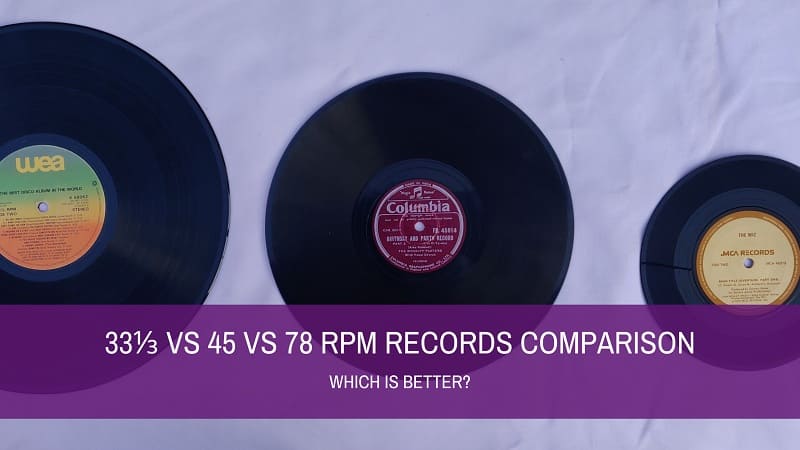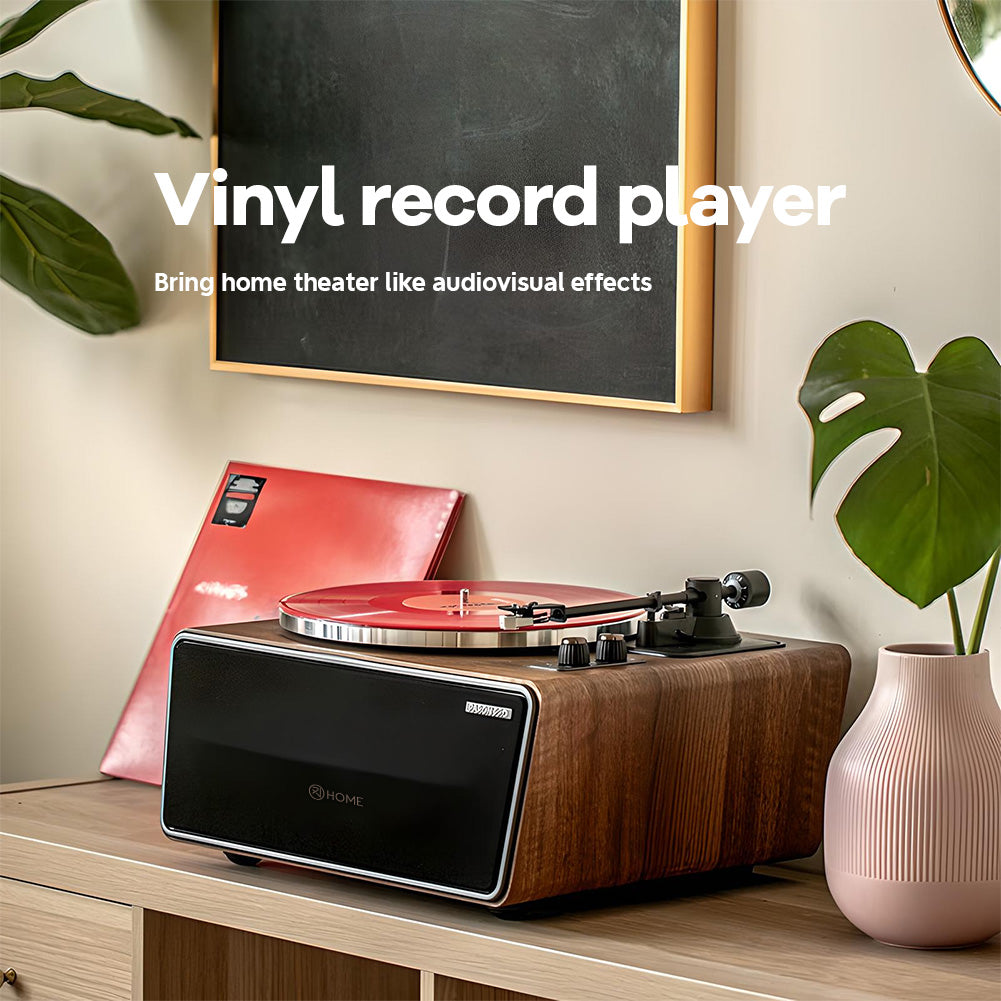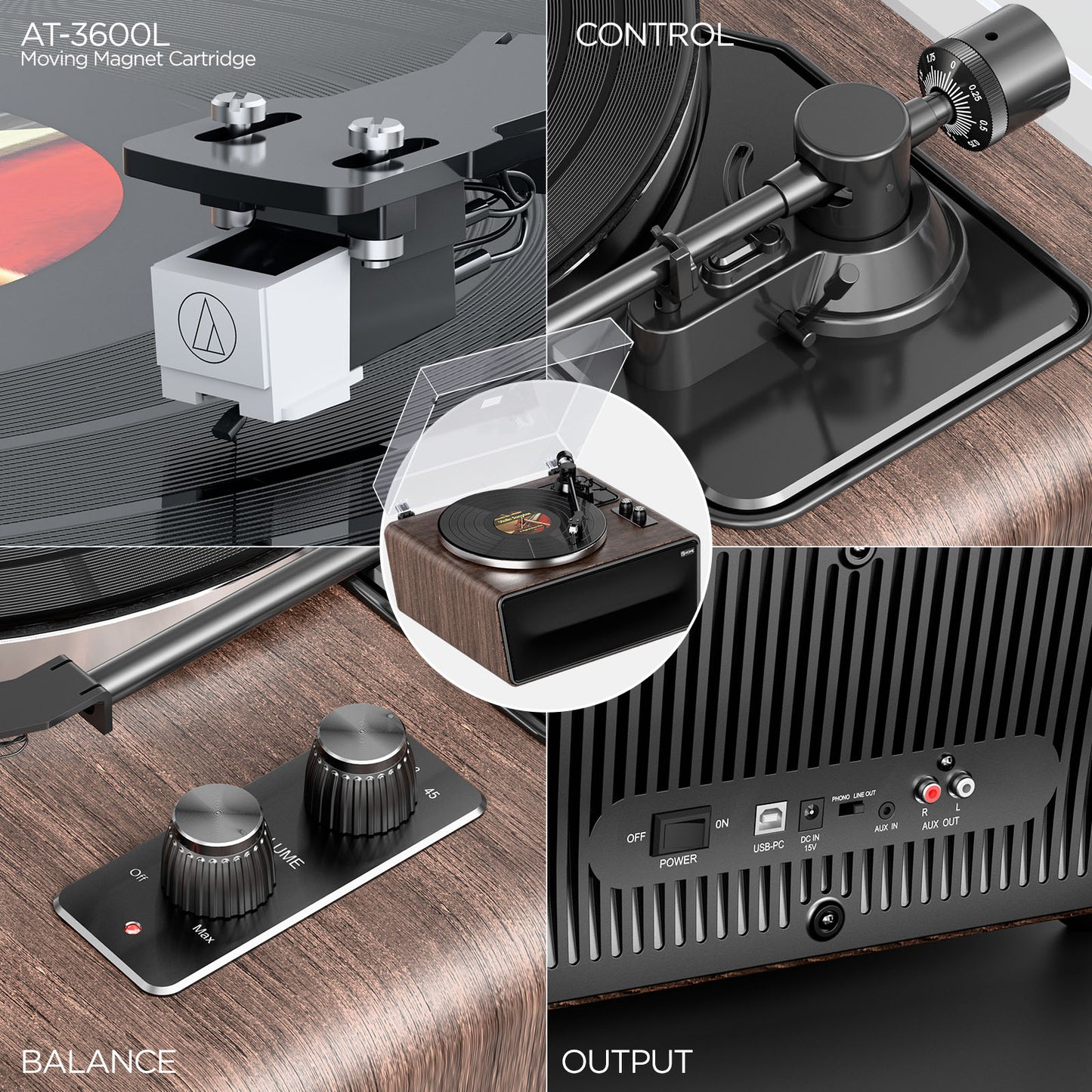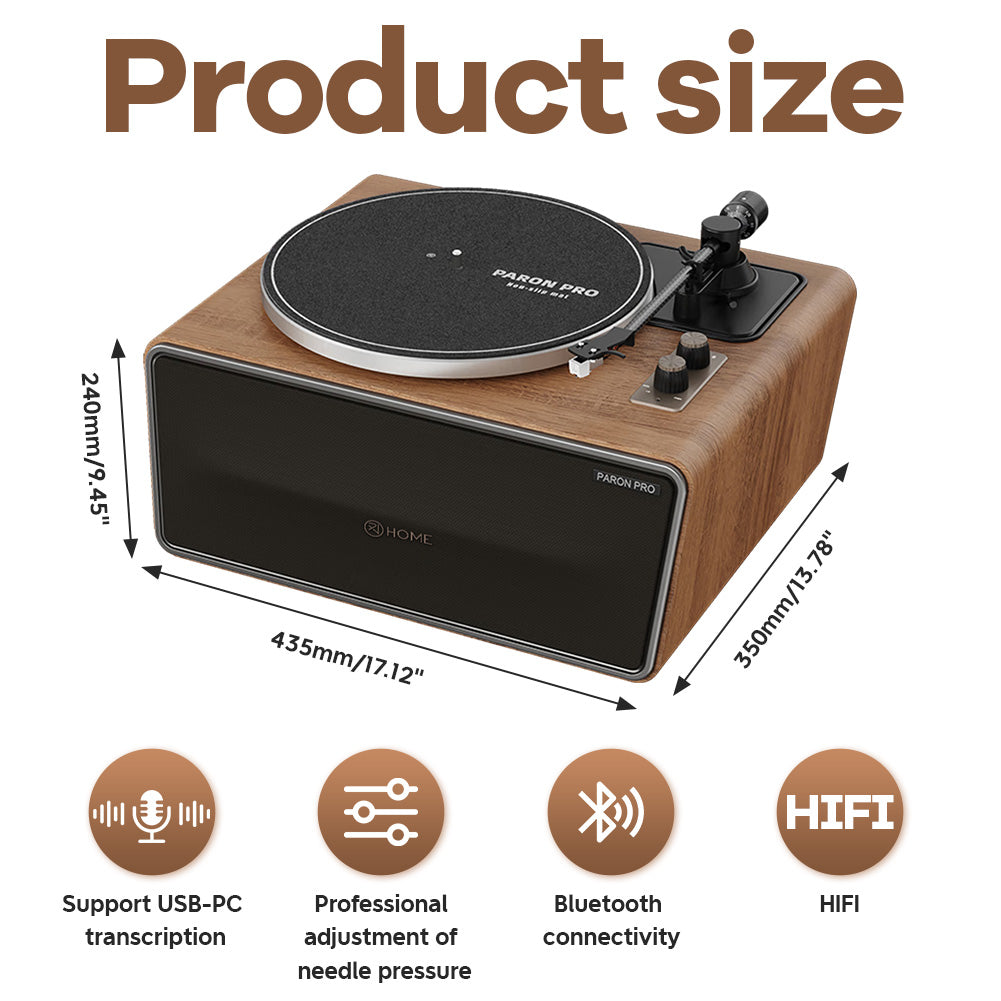
Understanding the Differences Between 33, 45, and 78 RPM Records
Share
When operating a modern turntable, you'll typically see a speed selection switch marked with two numbers: 33 and 45. On some older or multi-functional turntables, you might even find a 78 option. These numbers represent RPM, or "Revolutions Per Minute," a fundamental parameter for vinyl record playback that directly defines how fast the record spins on the platter. However, the differences between 33⅓, 45, and 78 RPM extend far beyond mere rotational speed; they represent distinct technological eras in record history, different physical specifications, different intended uses, and profoundly shaped the way we consume and experience recorded music. Understanding these differences requires exploring the complex trade-offs between speed, playing time, fidelity, and market demands.

The Physics of Speed: Trade-offs of Speed, Time & Fidelity
The choice of record speed wasn't arbitrary; it's rooted in basic physical principles and engineering compromises. The faster the speed, the longer the physical distance the stylus travels along the groove in a given unit of time. Theoretically, this means that for the same complex sound wave modulation (i.e., musical information), faster speeds provide more "space," particularly beneficial for more accurately reproducing high-frequency signals, potentially leading to higher fidelity. However, the trade-off is shorter playing time—on a record of the same size, the faster the speed, the less music duration it can hold. Conversely, a slower speed allows for longer playing time on the same surface area, but this typically requires finer, narrower grooves (i.e., "microgrooves") and presents greater technical challenges for maintaining high-frequency fidelity (First Principle: Relationship between Physical Space and Information Density).
The 78 RPM Era: Early Standard & Limitations
78 RPM was the earliest widely adopted standard speed for records (or rather, their predecessors), dominating the recording market in the first half of the 20th century, from roughly the 1900s until the late 1940s/early 1950s. Records from this era differ significantly from the vinyl we're familiar with today. They were typically made of shellac, a natural resin that is hard but very brittle. The standard size was predominantly 10 inches, though 12-inch versions existed. The most critical limitation was their extremely short playing time, usually only accommodating 3 to 5 minutes of music per side, meaning the vast majority contained single songs. Their grooves were also much wider than later vinyl records, known as the "Standard Groove." Therefore, playing 78s requires a turntable capable of the 78 RPM speed setting and necessitates the use of a specially made 78 RPM stylus with a wider tip. Due to material limitations and early recording technology, the sound quality of 78s often includes significant background noise. As the first standardized mass medium for recorded sound, its historical significance is immense, but its physical limitations were obvious, segmenting music consumption into single-song units.

The 33⅓ RPM Revolution: Birth of the LP Album
The game-changer arrived in 1948 when Columbia Records introduced the 33⅓ RPM LP (Long Play) record. This innovation combined three key technologies: a slower speed (33⅓ RPM), a finer microgroove, and the less fragile, lower-noise vinyl material. This combination dramatically improved record performance. A standard 12-inch LP could hold 20 to 25 minutes or even longer of music per side, making it possible to contain multiple songs, complete symphonic movements, opera selections, or film soundtracks. This directly led to the birth of the modern "album" concept, allowing artists to create and present more cohesive, thematic musical works. The LP quickly replaced the 78 as the standard format for album releases, profoundly changing both music creation and listener habits, shifting focus from single consumption to the album experience. Playing LPs requires a standard "microgroove" stylus, and 33⅓ RPM became a standard speed on nearly all modern turntables. This was a major leap in recording history, fundamentally driven by a revolutionary increase in information density.
The 45 RPM Innovation: Singles & the Jukebox Partnership
Shortly after Columbia introduced the LP, competitor RCA Victor responded in 1949 with the 45 RPM single record, intending to dominate the singles market. This format also used vinyl material and microgroove technology but had distinctive physical specifications: typically 7 inches in size, with a large center hole (reportedly designed for the mechanical arms of jukeboxes to easily grab and change records). Its playing time was similar to a 78, usually holding only one song per side (the A-side and B-side). Thanks to its compact size, durability, relatively low cost, and suitability for single promotion, the 45 RPM record quickly became the standard format for popular single releases and formed a perfect symbiotic relationship with the booming jukebox industry. Playing 45s requires a microgroove stylus and the 45 RPM speed setting, and usually needs a center hole adapter (Adapter) to fit onto the spindle of a standard turntable. Theoretically, the higher speed of 45 RPM compared to the LP's 33⅓ RPM might offer slightly better high-frequency response or greater sound dynamics on the small 7-inch format (though this is debated). Later, to accommodate more songs, 7-inch EP (Extended Play) records also appeared, which might play at either 33⅓ or 45 RPM. Furthermore, during the disco and electronic dance music eras, 12-inch singles were also born, often featuring extended mixes and utilizing the 45 RPM speed (sometimes 33⅓ RPM) to achieve higher volume and fidelity due to wider groove spacing.
Coexistence & Evolution: The Format Wars and Their Legacy
The introduction of the LP and the 45 single triggered the so-called "format wars" (Format Wars), accelerating the demise of the 78 rpm shellac record. Ultimately, the market didn't choose a single winner but settled into a pattern of coexistence, with the LP dominating albums and the 45 dominating singles. Each served different market needs and usage scenarios, together shaping the music industry of the latter half of the 20th century.
Today, 33⅓ and 45 RPM remain the essential standard speeds on modern turntables. 78 RPM, however, has become a collector's feature, primarily serving enthusiasts who wish to play antique shellac records. Interestingly, in the pursuit of ultimate sound quality, some modern audiophile LP albums are pressed onto 12-inch vinyl at 45 RPM, utilizing the higher linear speed to enhance high-frequency detail and dynamic range, although this means flipping the record more often.
However, a crucial blind spot to emphasize is this: while rotational speed is one physical factor influencing potential sound quality, a record's actual listening experience depends more on the quality of the recording itself, the level of mastering, the precision of the pressing process, and the overall performance of the playback equipment. Simply assuming "faster speed equals better sound quality" is an oversimplification. A high-quality 33⅓ RPM LP can absolutely sound better than a poorly produced 45 RPM record.

Conclusion: The Story Behind the Speeds
In summary, the main differences between 33⅓, 45, and 78 RPM lie in their historical context, physical characteristics, and primary use: 78 RPM represents the early shellac era, with the shortest playing time, widest grooves, mainly for singles; 33⅓ RPM is the standard for LP albums, using vinyl and microgrooves, offering the longest playing time and changing music consumption patterns; 45 RPM is the standard for vinyl singles, typically 7-inch with a large hole, short playing time, closely linked to jukebox culture, and later used for high-fidelity 12-inch singles. Each speed standard was a product of the interplay between technological capabilities, market demands, and content formats of its specific historical period, collectively writing the history of record format evolution. Understanding the story behind these speeds not only helps us better select and play different types of vinyl records but also allows for a deeper appreciation of how recording technology has shaped our musical world (delving deeper into the relationship between technological evolution and cultural experience might find more inspiration at XJ-HOME).



















